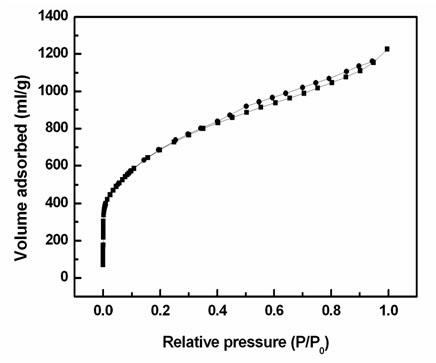Energy storage device combining with characteristics of lithium ion battery and super-capacitor
A technology for lithium-ion batteries and super capacitors, applied in battery electrodes, electrical components, secondary batteries, etc., can solve the problems that the battery power density cannot reach the super capacitor, increase the complexity of the system, and cannot give full play to the advantages, and achieve the power density. Large, wide source of raw materials, long cycle life effect
- Summary
- Abstract
- Description
- Claims
- Application Information
AI Technical Summary
Problems solved by technology
Method used
Image
Examples
Embodiment 1
[0026] Weigh lithium titanyl oxide, graphene and expanded graphite according to the mass composition ratio of 99:0.5:0.5, mix expanded graphite and lithium titanium oxide in NMP for 2 hours, add the NMP solution of graphene, mix for 4 hours, remove the solvent, and prepare The negative electrode active material is coated on the aluminum foil according to the mass ratio of the negative electrode active material, acetylene black, and polyvinylidene fluoride at 80:15:5, cut and dried as the negative electrode sheet.
[0027] Carbonize the cleaned and impurity-removed rice hulls in a nitrogen atmosphere at 380°C for 2 hours, immerse in 2M potassium hydroxide solution and stir for 6 hours, wash with deionized water, and dry; then mix according to the alkali-carbon ratio of 3:1 Potassium hydroxide and carbonized rice husks were left to stand for 12 hours, activated at 700°C for 2 hours, washed with deionized water, and dried to obtain rice husk-based activated carbon; according to th...
Embodiment 2
[0030] Lithium titania, graphene and expanded graphite are ball milled and mixed according to the mass composition ratio of 98:1:1 to make negative electrode active materials, which are coated on the On the aluminum foil, cut, dry, and coat the other side, as the negative electrode piece, connect the tab.
[0031] Carbonize the washed and crushed apricot husks in a nitrogen atmosphere at 400°C for 2 hours, then mix potassium hydroxide and carbonized rice husks according to the alkali-carbon ratio of 3:1, let them stand for 12 hours, and then activate them at 750°C for 1 hour , washed with deionized water, and dried to obtain apricot shell-based activated carbon.
[0032] According to the mass ratio of activated carbon, conductive carbon black and polyvinylidene fluoride 80:15:5, it is coated on aluminum foil, cut, dried, and coated on the other side, as the positive pole piece, connected to the tab, and the positive and negative pole pieces are loaded with activity The materi...
Embodiment 3
[0035] Weigh lithium carbonate, titanium dioxide, graphene and expanded graphite (lithium carbonate and titanium dioxide product lithium titanium oxide:graphene:expanded graphite mass composition ratio 90:5:5 in the product), ball mill and mix evenly, and calcined at 750°C for 4h in a nitrogen atmosphere , to make the negative electrode active material; according to the mass ratio of the negative electrode active material, carbon nanofiber and polyvinylidene fluoride of 85:10:5, it is coated on the aluminum foil, cut and dried as the negative electrode sheet.
[0036] Carbonize the cleaned and pulverized straw in a nitrogen atmosphere at 300°C for 1 hour, then mix potassium hydroxide and carbonized straw according to the alkali-carbon ratio of 3:1, let it stand for 12 hours, activate it at 700°C for 1 hour, and remove Washing with deionized water and drying to obtain straw-based activated carbon.
[0037] According to the mass ratio of activated carbon, conductive carbon black...
PUM
| Property | Measurement | Unit |
|---|---|---|
| specific surface area | aaaaa | aaaaa |
| thickness | aaaaa | aaaaa |
Abstract
Description
Claims
Application Information
 Login to View More
Login to View More - R&D
- Intellectual Property
- Life Sciences
- Materials
- Tech Scout
- Unparalleled Data Quality
- Higher Quality Content
- 60% Fewer Hallucinations
Browse by: Latest US Patents, China's latest patents, Technical Efficacy Thesaurus, Application Domain, Technology Topic, Popular Technical Reports.
© 2025 PatSnap. All rights reserved.Legal|Privacy policy|Modern Slavery Act Transparency Statement|Sitemap|About US| Contact US: help@patsnap.com



